Disclosure: This article contains affiliate links. We may earn a commission from purchases at no extra cost to you, which helps our travel content.
The first time I witnessed Mont-Saint-Michel emerging from the morning mist, I understood why it's considered one of France's most magical landmarks. This medieval abbey perched atop a rocky island, surrounded by a vast bay where the tide creates a constantly shifting landscape, presents a photographer's dream and challenge. Having visited during different seasons and tidal cycles over the years, I've developed strategies for capturing its many moods. Whether you're wielding a professional setup or simply your smartphone, this ancient wonder deserves thoughtful composition to truly honor its majesty. In this guide, I'll share everything I've learned about photographing Mont-Saint-Michel through changing tides, light conditions, and seasons—specifically the atmospheric autumn months when tourist crowds thin and the light turns gloriously golden.
Understanding the Tides: Nature's Transformation
Mont-Saint-Michel experiences some of Europe's most dramatic tidal variations—up to 15 meters difference between high and low tide during spring tides. This natural phenomenon completely transforms the landscape around the mount, creating two entirely different photography opportunities.
During high tide, the mount becomes a true island, rising from the water like something from an Arthurian legend. These moments create clean, minimalist compositions where the mount stands in splendid isolation against the sky. The reflections on the water surface can double the visual impact, especially during sunrise or sunset when the light plays across the ripples.
At low tide, the exposed sandflats offer a different aesthetic altogether—textured foregrounds with rivulets creating leading lines toward the mount. The vast emptiness creates a sense of pilgrimage and journey. If you're lucky enough to visit during a grande marée (exceptionally high tide), you might capture the rare sight of water completely surrounding the mount, cutting off even the causeway.
My most memorable shoot happened during a spring tide last October. I had carefully planned using the tide charts app and arrived two hours before high tide. Setting up my tripod on the western viewpoint, I captured a time-lapse of the water gradually encircling the mount—a mesmerizing transformation from terrestrial to seemingly floating structure.
Nota bene: Always check tide tables before venturing onto the flats. The incoming tide moves faster than a running person in some areas, and the quicksand can be dangerous. Never attempt to walk all the way to the mount across the bay without a certified guide.
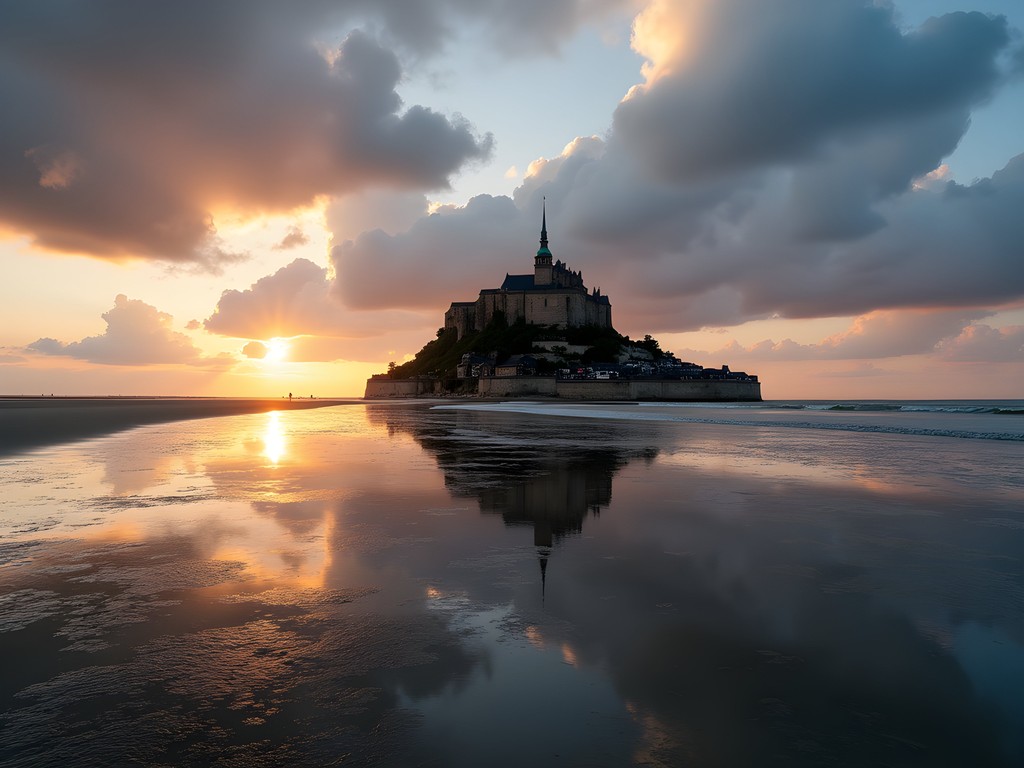
💡 Pro Tips
- Download a tide prediction app and plan your shoot at least 2-3 days in advance
- Arrive at least 2 hours before high tide to capture the gradual transformation
- The most dramatic tidal effects occur during full and new moons
The Magic of Light: Timing Your Shoot
Light is the photographer's primary medium, and at Mont-Saint-Michel, it performs a daily transformation that can elevate your images from tourist snapshots to fine art. I've spent countless hours observing how light interacts with the mount's distinctive silhouette across different times of day.
Dawn and Blue Hour Arriving well before sunrise rewards you with the soft blue hour—that ethereal period when the world is bathed in gentle blue light. The abbey often emerges from darkness as a shadowy silhouette against the gradually brightening sky. Position yourself along the western approach for this shot, where the first light will eventually illuminate the spire. During autumn, I've found myself alone here more often than not, the summer crowds long gone.
Golden Hour and Sunset The evening golden hour bathes the stone walls in warm amber light that accentuates the texture of the medieval architecture. For sunset, I prefer shooting from the east or northeast, where the setting sun illuminates the front façade of the abbey. The salt meadows (prés salés) near Roche Torin offer a particularly striking vantage point with sheep grazing in the foreground—a perfect juxtaposition of the pastoral and the monumental.
Night Photography When darkness falls, Mont-Saint-Michel transforms again as the abbey and village lights create a warm glow against the night sky. For these shots, a sturdy travel tripod is essential—I've tried handheld night photography here and always regretted not having proper stabilization. The causeway offers interesting leading lines for night compositions, with the illuminated mount creating a focal point that seems to float in the darkness.
During my last autumn visit, I captured a series spanning from blue hour through golden hour and into night—the progression showing how dramatically the character of the mount changes with the light. Che meraviglia! The fall season brings lower sun angles that create longer shadows and more dramatic side-lighting than summer visits.

💡 Pro Tips
- Check sunrise/sunset times and arrive at least 30-45 minutes before for blue hour
- During autumn, sunrise happens later (around 8am) making morning shoots more accessible
- Bring a headlamp for navigating in the dark during early morning or evening shoots
Composition Strategies: Beyond the Postcard Shot
While Mont-Saint-Michel is instantly recognizable, finding fresh compositions remains the creative challenge. After multiple visits, I've developed several approaches to capture this iconic structure in ways that go beyond the standard tourist image.
The Classic Approach Let's start with the quintessential shot—the full view of Mont-Saint-Michel rising from the bay. For this, the western approach offers the classic perspective. A wide-angle lens (16-35mm on full-frame) captures the entire scene, but don't overlook the compression effect of a telephoto lens (70-200mm) which can dramatically emphasize the mount against the sky.
Finding Foreground Interest The difference between an amateur and professional landscape photograph often comes down to the foreground. During low tide, the patterns in the sand create natural leading lines. I often use my polarizing filter to reduce glare on wet sand and enhance these textures. During autumn, the salt meadow grasses turn golden, creating warm foreground elements that complement the cool stone of the abbey.
Interior Perspectives Most photographers focus exclusively on exterior shots, missing the photographic potential within the abbey and village. The cloisters offer stunning architectural frames with changing light throughout the day. The narrow medieval streets create natural frames, and from certain windows within the abbey, you can capture breathtaking views across the bay. These interior shots often tell a more intimate story about the mount's human history.
Abstract and Detail Work Zoom in on the textures of centuries-old stone, capture the rhythmic patterns of the abbey's buttresses, or focus on the interplay of light and shadow across the architecture. These abstract approaches reveal the mount's character in ways that sweeping vistas cannot.
During my last visit, I spent an entire afternoon exploring just the ramparts, focusing on how the autumn light created dramatic shadows across the ancient stonework. Some of my most compelling images came from these detail studies rather than the grand landscape views I'd initially planned.
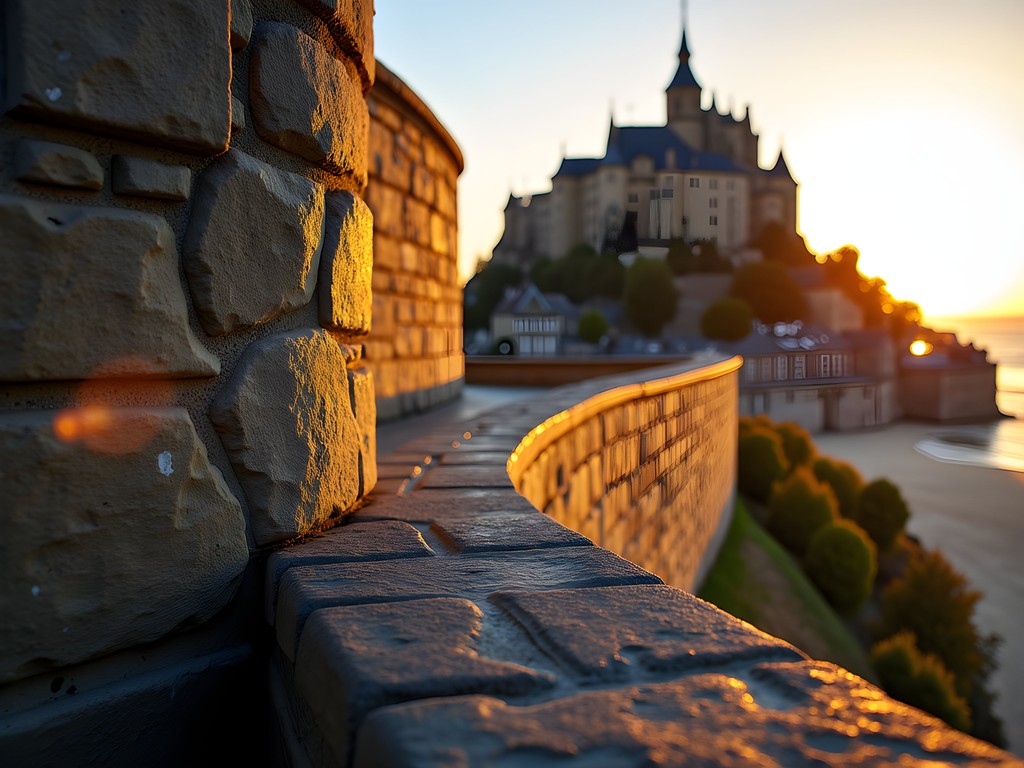
💡 Pro Tips
- Use the rule of thirds to place Mont-Saint-Michel off-center for more dynamic compositions
- Look for natural frames like archways or windows when shooting inside the village and abbey
- Try vertical compositions to emphasize the height and majesty of the abbey spire
Essential Gear: Packing for Versatility
Photographing Mont-Saint-Michel demands versatile equipment to handle everything from vast landscapes to architectural details, often in challenging weather conditions. Here's what I consider essential for a productive shoot:
Camera System While any camera can capture beautiful images here, weather-sealing is valuable given Normandy's unpredictable conditions. I use a full-frame mirrorless system for its dynamic range and low-light performance, crucial for dawn and dusk shoots. That said, modern smartphones with computational photography can produce remarkable results—don't feel limited by your gear.
Lens Selection I typically bring three lenses: - Ultra-wide zoom (16-35mm): For dramatic environmental shots including foreground elements - Standard zoom (24-70mm): My most-used range for general compositions - Telephoto zoom (70-200mm): For compression effects and isolating architectural details
If I could bring only one lens, the versatile 24-70mm would be my choice.
Support and Stability Normandy's coastal winds can be fierce, especially in autumn. A sturdy travel tripod is essential for long exposures and bracketed shots. I've had lightweight tripods topple in the wind here—stability matters. Consider bringing a remote shutter release to minimize camera shake during longer exposures.
Filters Three filters dramatically improve landscape work at Mont-Saint-Michel: - Polarizer: Reduces glare on wet surfaces and deepens the sky - Graduated ND filters: Balances exposure between bright sky and darker foreground - Solid ND filters: Enables long exposures to smooth water and clouds
Protection and Practicalities Normandy's weather is notoriously changeable, especially in fall. My camera rain cover has saved shoots during sudden downpours. Bring extra batteries—cold autumn temperatures deplete them faster than you might expect. Finally, a good lens cloth is essential as salt spray can settle on your glass even from a distance.
A note on footwear: If you plan to photograph from the mudflats (only with appropriate tide knowledge), rubber boots are absolutely necessary. The mud is deeper and more challenging than it appears from a distance—l'ho imparato a mie spese (I learned this the hard way).
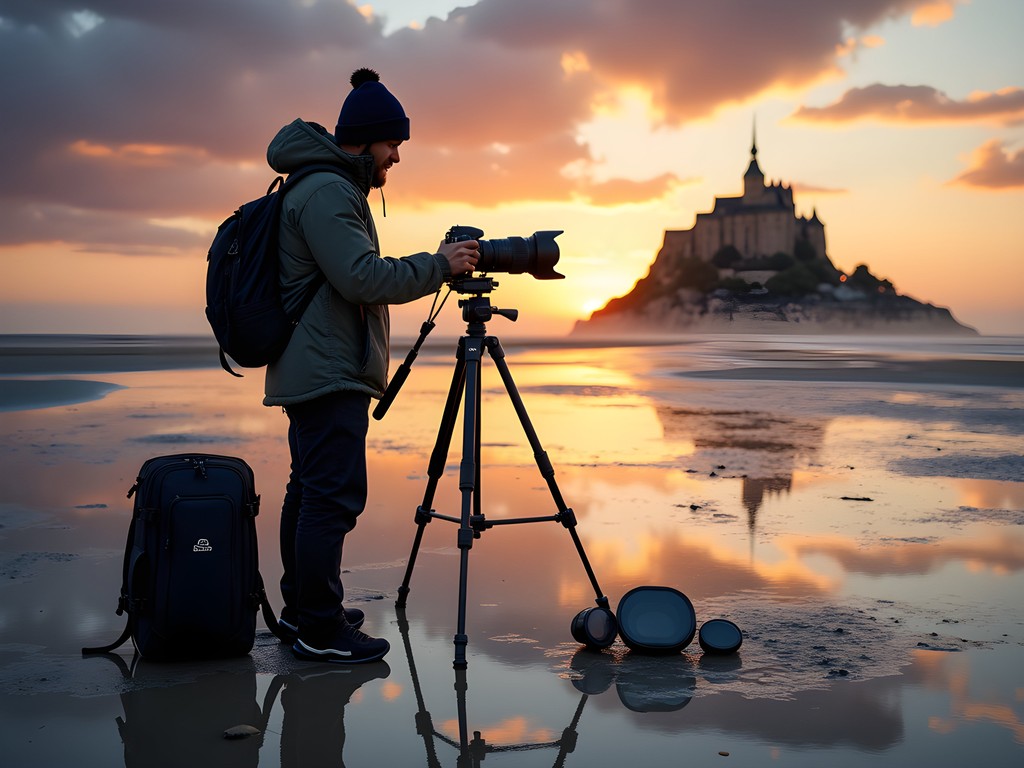
💡 Pro Tips
- Bring twice as many batteries as you think you'll need—cold autumn temperatures drain them quickly
- Pack lens cleaning supplies as salt spray is common even when you're not close to the water
- Consider a camera shoulder strap with quick-release system for easy transition between handheld and tripod shooting
Beyond the Obvious: Secret Vantage Points
After multiple visits to photograph Mont-Saint-Michel, I've discovered several lesser-known vantage points that offer unique perspectives beyond the standard postcard views. These locations are particularly magical during the autumn months when tourist numbers dwindle and the light takes on a softer, more golden quality.
Pointe du Grouin du Sud This elevated viewpoint about 5km southeast of the mount offers a completely different perspective than the standard western approach. From here, Mont-Saint-Michel appears to rise dramatically from the flat bay, especially striking at high tide. The morning light illuminates the eastern face of the abbey, a view most visitors never see. In autumn, the salt marshes below turn a beautiful golden-red, creating a stunning foreground.
Roche Torin Further east than the Pointe du Grouin, this area provides a more distant but elevated view. What makes this location special is how it places Mont-Saint-Michel in its broader landscape context. On clear autumn evenings, the sunset light creates a silhouette effect that emphasizes the mount's iconic shape against colorful skies. The sheep grazing on the salt meadows add a pastoral element to compositions.
From the Marshes The polders and marshlands north of Mont-Saint-Michel offer unique foreground elements like traditional wooden gates, weathered fences, and drainage channels that create leading lines toward the mount. These areas are particularly atmospheric in autumn mornings when mist often lingers until mid-morning. Access requires some exploration on foot, but the reward is photographs that few others capture.
The Abbey Terraces While not exactly secret, the upper terraces of the abbey itself are overlooked by many photographers who focus exclusively on exterior shots. The west terrace offers spectacular views across the bay, especially at sunset. The perspective looking down on the village rooftops with the bay beyond creates a sense of the mount's vertical drama that ground-level shots cannot convey.
During my last autumn visit, I discovered a small unmarked path through the marshes that led to a perfect reflection pool—a drainage channel that perfectly mirrored the mount during still conditions at sunrise. I sat alone for over an hour, watching the light change and capturing a series of images as mist swirled around the base of the mount. Momenti così sono il vero lusso del fotografo solitario—moments like these are the true luxury of the solitary photographer.
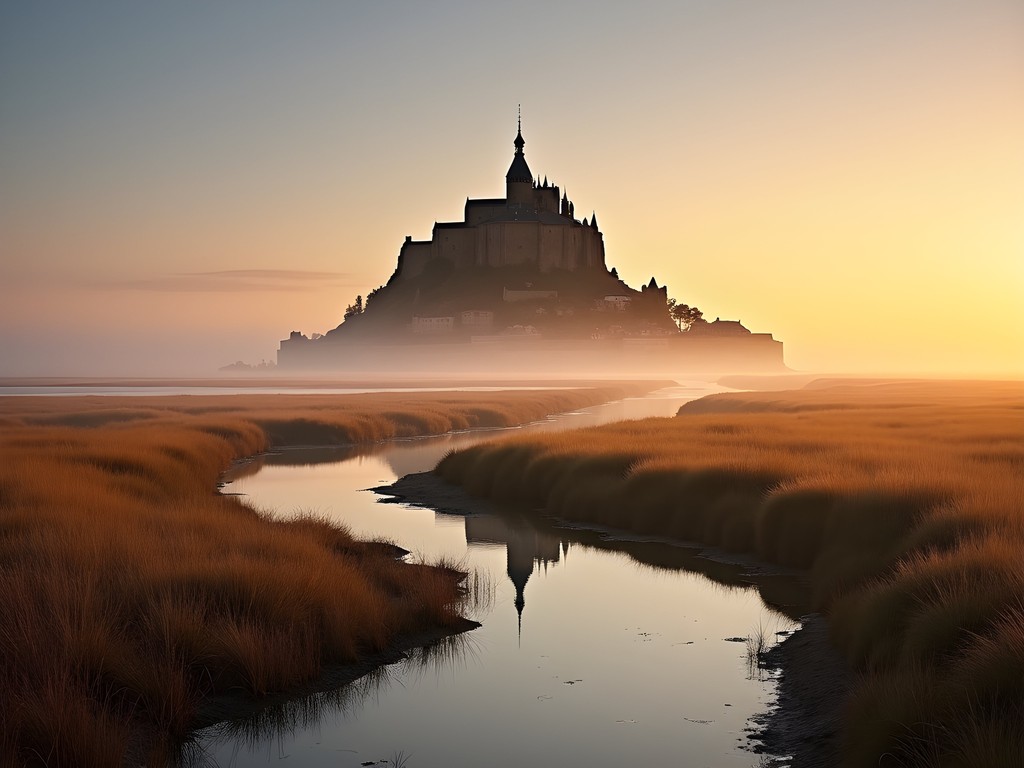
💡 Pro Tips
- Research potential viewpoints on Google Earth before your visit to identify promising angles
- Bring waterproof hiking boots if exploring the marshlands—regular shoes won't survive the mud
- Allow extra time to reach lesser-known viewpoints as paths are often unmarked and longer than they appear on maps
Final Thoughts
As I pack away my gear after another autumn visit to Mont-Saint-Michel, I'm reminded that truly capturing this place is an endless pursuit. Each tide, each quality of light, each season brings new possibilities. The photographs that resonate most deeply are rarely the ones that simply document the mount's appearance, but rather those that capture its essence—the interplay of natural and human elements that have coexisted here for centuries. Whether you're visiting for the first time or returning as I do, approach your photography with patience and curiosity. Let the rhythms of the tide and light guide your creative decisions. And sometimes, put the camera down entirely to simply absorb the wonder of this place where earth, sea, and sky converge in perfect harmony. When you're ready to press the shutter again, you'll do so with greater understanding and vision. Buona fotografia, amici miei!
✨ Key Takeaways
- Plan your visit around both tides and light conditions for maximum photographic opportunities
- Explore beyond the obvious viewpoints to find unique compositions that tell a deeper story
- Consider the season carefully—autumn offers atmospheric conditions and fewer crowds
- Bring versatile gear prepared for Normandy's changeable weather conditions
📋 Practical Information
Best Time to Visit
September-November (autumn)
Budget Estimate
€150-250/day including accommodation, food, and transportation
Recommended Duration
3-4 days minimum for varied conditions
Difficulty Level
Moderate (Requires Planning Around Tides And Weather)














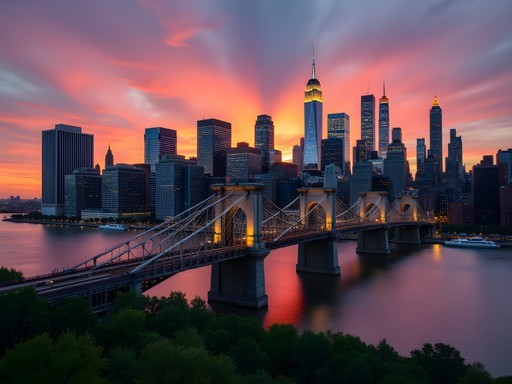
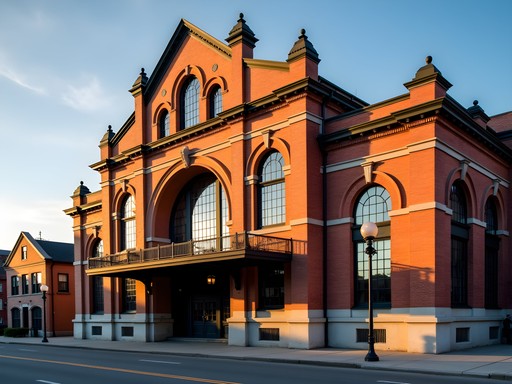
Comments
NormandyLover
Just got back from Mont-Saint-Michel last week! Pro tip: the causeway offers amazing reflection shots about 1-2 hours after high tide when there's still water but it's calm enough for reflections. Also, the tourist shuttles stop running at night, so plan accordingly if you're shooting sunset!
PhotoTraveler92
Great guide! What's your recommendation for a tripod that's sturdy enough for the wind but light enough to carry around all day?
Kevin White
Thanks for the question! I use a carbon fiber travel tripod that's about 3lbs but extends to full height. The wind can be brutal there, so I also carry a small sandbag I can fill on location to add stability. The key is finding that balance between portability and sturdiness!
Marco Flores
Kevin, your timing advice is spot on! Last April I arrived at 5am to catch blue hour and stayed through sunrise. The abbey slowly emerging from darkness was worth every second of lost sleep! I'd add that the salt marshes north of the causeway offer unique perspectives too. I spent an afternoon there with my telephoto lens capturing reflections in the shallow water pools. One thing I learned the hard way: bring waterproof hiking boots if you plan to venture onto the flats during low tide. The mud is no joke! Anyone planning to photograph the night sky should also check the moon calendar - I got lucky with a crescent moon that provided just enough light to illuminate the abbey without washing out the stars.
summerlegend
Did you stay overnight on the island? Wondering if it's worth the extra cost.
Marco Flores
I did! It's pricey but magical once the day-trippers leave. The evening light on the stone walls is something special, and you can get sunrise shots without the early commute. Just book way in advance!
summerlegend
Wow, these photos are incredible! I've always wanted to visit Mont-Saint-Michel. Saving this for my trip next year!
Marco Flores
You absolutely should go! I was there last spring and it's even more magical in person. The way the light changes throughout the day is something no photo can fully capture.
summerlegend
Any tips on the best time to visit? I'm thinking May but not sure about crowds.
Marco Flores
May is good! Shoulder season means fewer crowds but still decent weather. Just check the tide tables Kevin mentioned - seeing it surrounded by water is worth planning around!
cityvibes
Is it worth staying overnight on the island itself? The hotels look expensive but wondering if the evening/early morning access makes it worth it?
luckylover930
100% worth it! We stayed at La Mère Poulard and watching the tourists leave in the evening was magical. Having the place almost to yourself at night is an experience you can't get any other way.
Charlotte Watkins
We stayed in Pontorson and drove in early morning (15 minutes) which was a good compromise. But if your focus is photography, being there for both sunset and sunrise without commuting would be ideal!
NormandyLover
Your shots are incredible! Which one was the hardest to get?
LensMaster44
Great guide! One tip I'd add - bring rain covers for your gear. I got caught in a sudden downpour last year and it comes on FAST across that bay.
islandnomad
Just wow. Adding this to my bucket list immediately!
Timothy Jenkins
Brilliant guide, Kevin! Your section on understanding the tides is spot on. For anyone planning a visit, I'd add that staying overnight on the island itself gives you magical access during the quiet evening hours when day-trippers have left. I spent two nights there last autumn and had the ramparts almost to myself at dawn. The light at that hour creates this golden glow on the stone that's impossible to describe. One practical tip: bring good walking shoes as those cobblestones are slippery when wet, especially if you're carrying camera gear. Kevin's composition advice about shooting through the narrow streets for framed views is excellent - those ended up being some of my favorite shots.
Timothy Jenkins
It's definitely pricey, but for photography purposes, absolutely worth it for at least one night. The light and atmosphere change completely once the crowds leave. If budget is tight, staying in Pontorson and catching the first shuttle in works too!
photoexplorer
Timothy - did you find it worth the premium to stay on the island? I've heard the hotels there are quite expensive.
TravelBug_Emma
Going there next month! How difficult is it to predict the fog/mist conditions? That shot with the abbey emerging from the mist is exactly what I'm hoping for!
Kevin White
Hi Emma! Autumn mornings (especially September-October) have the best chance for mist. Check the weather forecast for temperature drops overnight combined with high humidity. Good luck!
Venture X
Premium card with 2X miles, $300 travel credit, Priority Pass